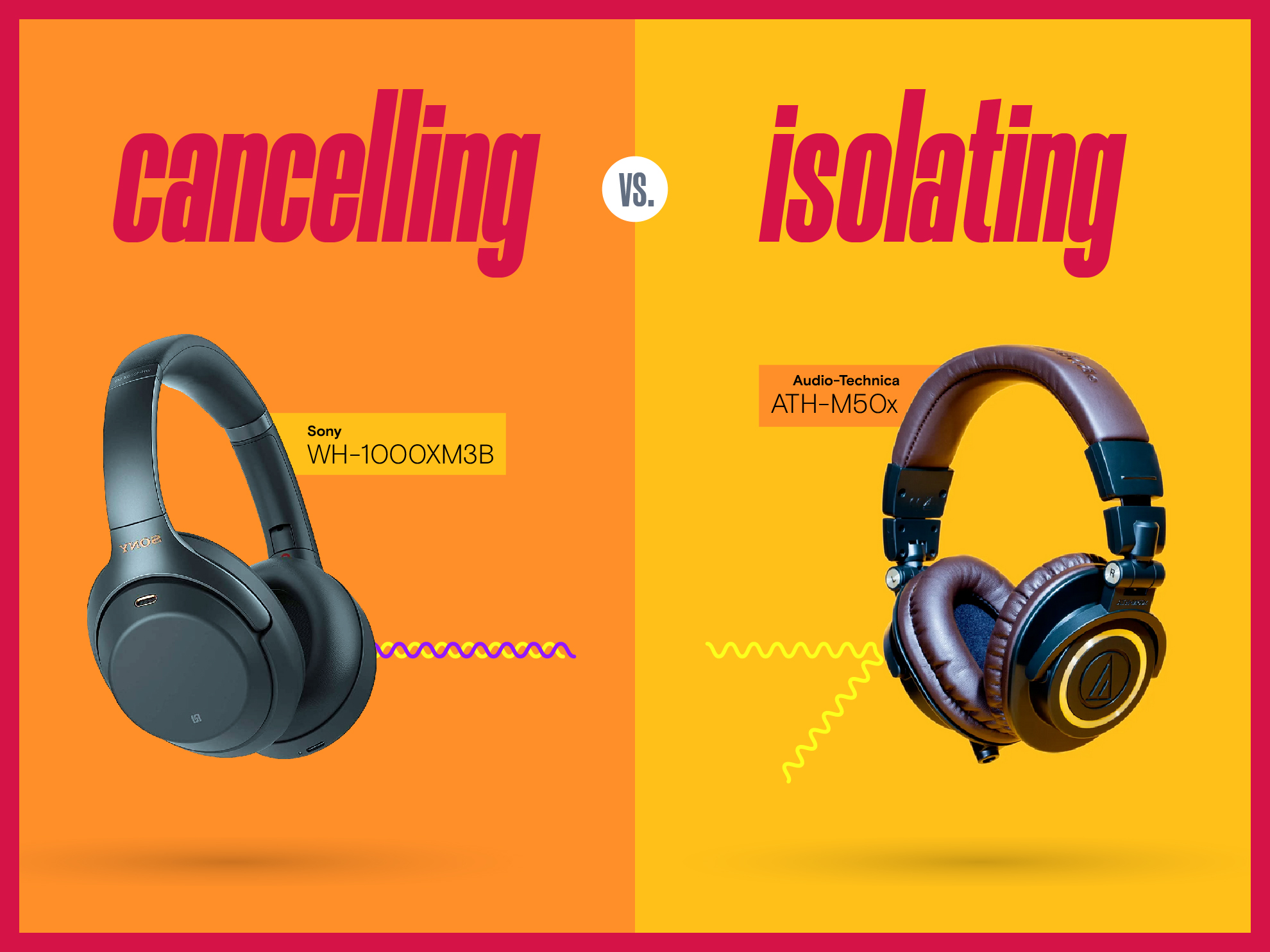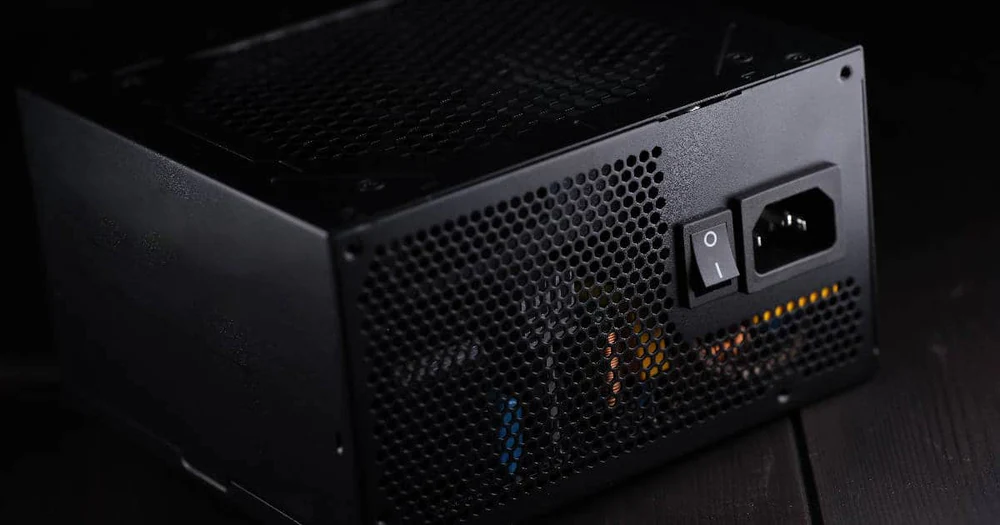Noise forms the basis of everything today. We’re surrounded by technology that makes noise all the time. Whether it’s an air-conditioner or your car engine on the way to work.
It’s pretty normal to find complete silence a luxury that’s hard to come by. Even more so for those who listen to their music religiously or game for hours in a busy household.
There are two technologies that although sound similar, have a whole lot of differences between them: noise cancellation and noise isolation. Both are technologies that help you overcome the noise and focus on the music that’s playing on the headphones (or it could be a game, or nothing playing at all). But that’s about as close as you can get to similarities between the two.
Let’s find out what both these techniques accomplish and which is better.
But before that, let’s first define what’s noise in terms of both these techniques.
What is noise for a noise-canceling or noise-isolating headphone?
Noise is background sound and ambient disturbance. The ambient sounds of the workplace, college, or café count as noise. Wind passing by also creates noise. If you’re commuting, pretty much all you hear can be dubbed as noise from people chatting indistinctively to someone listening to their favorite rap track without their headphones on.
I’d go on to claim that to some, noise could also be very subjective. For me, when my mom comes down to the basement yelling not to play more games and come have my elevens, I disregard it as noise. I am 30.
So, headphones filter out these noises predominantly in two ways: cancellation and isolation. However, how much they do so also varies, and this is something you will need to bear in mind when you choose headphones, asking which headphones cancel the most noise.
Noise isolation

It means exactly what you’d imagine. Isolating background noise with a physical barrier is what the marketing term noise isolation is for.
It’s as simple as blocking your ears by fully stuffing them. Noise isolation is also called passive noise cancellation. When you cover your ears, the background sounds get muffled, which is exactly what noise-isolating headphones do.
They filter out extra sounds by blocking your ears so you could better focus on the sound coming through them. It’s not perfect but gets the job done with flying colors.
The foam pads in your headphone’s ear cups isolate your ear from the rest of the sound and background noise.
Noise isolation’s effectiveness varies depending on the material, overall design, and the fit of the headphones. In the poorest of cases, plenty of noise could still sneak in while in many cases, it can be effective and stop all leaks.
It’s also a fact that earphones by default work as noise-isolating devices regardless of whether or not they claim to have that technology. Over-the-ear and in-ear earphones are very effective in noise isolation given you get the perfect fit for your ear.
Noise cancellation

Active noise cancellation is a more wholesome methodology. It uses various components and technologies to block off the ambient noise almost entirely, if not perfectly.
How does it do that?
A noise-canceling headphone works on a three-part system.
- The first part is the active mic. This mic is always on. Its job is to capture all noise that’s coming to it.
- The second part is a component placed inside the earcups. This component is responsible for creating an exact opposite sound wave to the one that the mic picked up. It does so by inverting the sound wave in real-time.
- The third and final part is output. The output is completely devoid of whatever the mic picked up (all the ambient noise) because the two opposite sound waves cancel each other out (+1 and -1 equal to 0), and therefore the name.
I still remember the first time I got my Sony noise-canceling headphones. The moment you turn on noise cancellation, you won’t be hearing anything at all, including a significant volume of your own speech.
The science behind it is fairly straightforward.
If you open a sound editing software like Adobe Audition or Audacity, you can do this yourself. Add a sound bite into the software, duplicate it, reverse the duplicated sound wave, and superimpose them on each other. The resulting output will be perfect silence because both sound waves will cancel each other out.
A noise-canceling headphone does precisely this but in a real-time manner.
If you want me to get more technical, here’s what happens precisely:
- The mic records everything.
- A built-in chipset runs a reversal algorithm that produces a soundwave that’s 180 degrees out of phase with the recorded sound wave.
- It pushes the output through the speakers in the earcups along with anything else that’s playing – so you hear the sound from the source and you also “unhear” the ambient noise simultaneously.
As a result, you only hear what the headphone is relaying (if anything). In many ways, it’s sort of a neutralizing process that works on the principle of counter-signals.
Many headphones allow you to adjust the amount of noise you want to cancel. At their maximum settings, they can filter out powerful sound waves, which is not recommended in many situations, like when commuting or driving.
In normal situations, a noise-canceling headphone will filter out low-frequency sound waves easily, such as those from a running car engine or a large air conditioner.
Which one is better?

Noise cancellation is more effective than noise isolation. It reduces the noise much more than isolation. Additionally, if you don’t happen to get the perfect fit in a noise isolation pair of headphones, you’re worse off.
In-ear noise isolation headphones are generally better than over-ear or on-ear noise-isolating headphones, thanks to them being able to seal the ear canal better.
As a general rule of thumb, expect to lose anywhere from 10dB to 30dB of noise with noise-isolating headphones. However, note that this will apply to all sounds, including medium and high frequencies.
Noise-canceling headphones, on the other hand, are different. They provide 30dB and more worth of noise reduction but only apply to low-frequency sounds mainly (which is what most of the ambient noise is made up of).
If you maximize their effectiveness, noise-canceling headphones can also reduce medium- or high-frequency sound waves by a lot. We’re looking at a whopping 20- or even 30dB reduction in sound from bigger noise sources (such as heavy traffic, my mom shouting, a lawnmower, etc.).
You can expect to lose around 95% of ambient noise with high-end noise-canceling headphones.
Which provides better sound quality?

These are murky waters. Nothing can be said here that’s going to stand factually correct across scenarios. We can approximate, though.
Noise-isolating headphones don’t have internal circuitry, so if you manage to get one that’s a good fit for you, you’re looking at an amazing music experience and sound quality.
On the other hand, noise-canceling circuitry can sometimes interfere with the sound signal coming from the source. For example, the entire process of recording sound waves and creating opposite sound waves can additionally create coloration or interference in the final sound output. Very rare and insignificant in high-end models, it could be much more pronounced in mid-tier products.
Regular noise-isolating headphones made for audiophiles beat mid-tier noise-canceling headphones fair and square. However, high-end and top-of-the-line noise-canceling headphones can stand their ground against audiophile headphones.
The noise cancellation technology has been improving for years now. Many great models from Shure, Sony, Bose, etc. excellently reproduce source sound quality while filtering out all the ambient sound.
It doesn’t change the fact that many audiophiles still love noise-isolating headphones and trust them with their lives when it comes to sound quality, accuracy, and clarity. High-end noise-canceling headphones are also preferred but especially when you also want a surround sound effect.
Other considerations
Don’t stop there. There’s plenty more to talk about!
- Comfort and safety are important. Noise-canceling headphones offer great comfort while audiophile-grade noise-isolating ones do too. It’s all a matter of preference here.
- Power consumption is significantly more in noise-canceling headphones because of the internal circuitry involved in their design. Charging these headphones can indeed be a nuisance, but higher-end models offer longer battery backup times (8 hours is the average).
- Beware of your surroundings! Wearing noise-canceling headphones while driving, walking, biking, or commuting in public transport can be dangerous because you will not pick up sounds that might be otherwise critical.
- Seal type is also an important consideration. What this means is that headphones that are meant to isolate noise need to be very strong in their sealing. This includes high-end noise-isolating headphones. On the other hand, noise-canceling headphones don’t depend on their seal to do their job, and as a result, can be more comfortable to wear for long hours.





